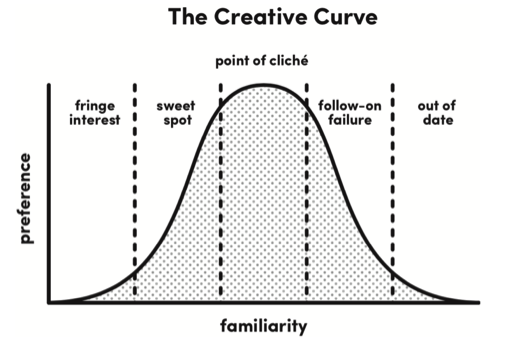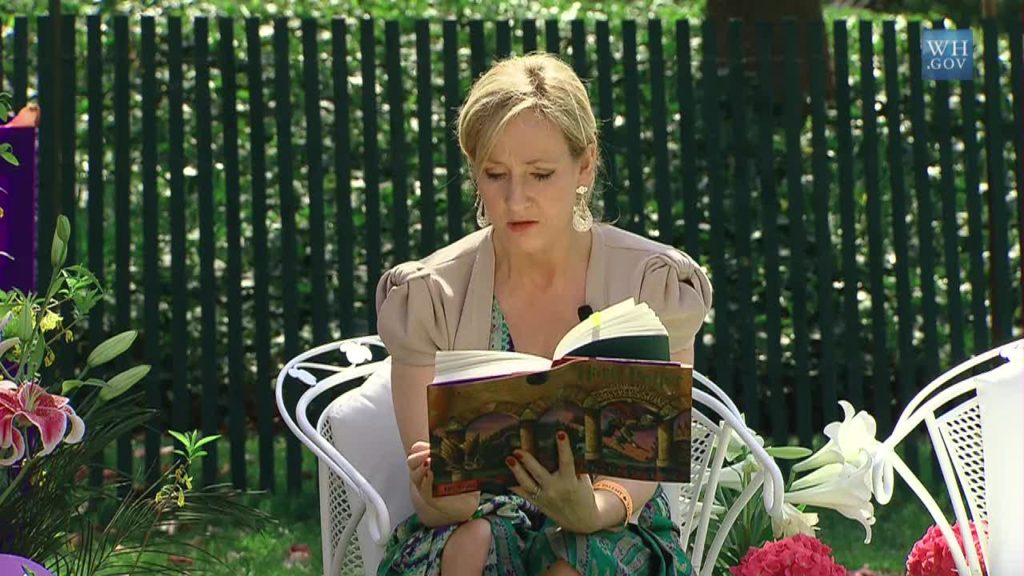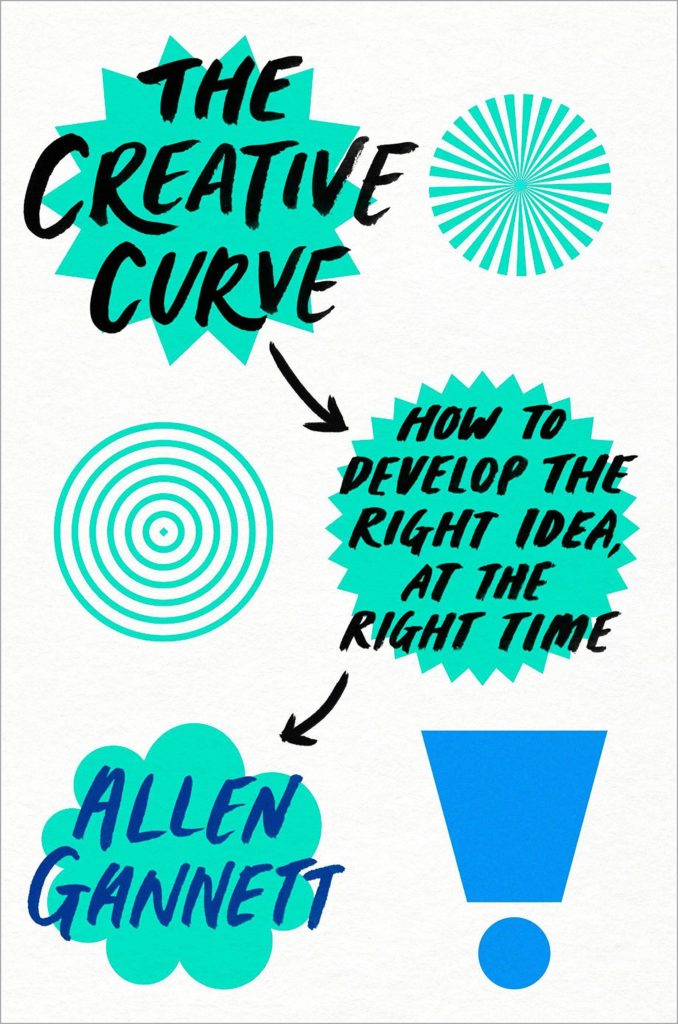
JK Rowling has it. So do Paul McCartney. And Ben & Jerry’s Ice Cream.
What I’m talking about is creativity – that elusive yet highly coveted ingredient which we content creators crave.
But how can you inject more creativity into your content marketing efforts?
After all, you are not endowed with that rare creative talent. Nor have you experienced a flash of brilliance, unlike these giants of the literary, film-making, music and entrepreneurial worlds.
Fortunately, there is a way to ‘growth hack’ your creative efforts thanks to Allen Gannett.
Author of The Creative Curve – How To Develop The Right Idea At The Right Time, Gannett suggests that there are four principles you can apply to increase your creativity in any entrepreneurial pursuit.
Before we dive into these four ways, let us first debunk the myths of creativity.
Debunking Myths of Creativity
Legend has it that the tune for Yesterday – the most recorded song in history – came to Paul McCartney in a dream. Happening back in November 1963, the melody came to the then 21 year old pop star in his sleep.
Except that this wasn’t the full story.
Explaining that the iconic song was a nearly two-year odyssey, Gannett narrated how it evolved. Sparked by the melody of Ray Charles Georgia on My Mind (The Beatles were big fans of the blind singer), the final version was painstakingly re-invented and refined through an iterative process.
Beyond the flash of brilliance myth cited above, the book further debunked the following:
- Spiritual Gifts: Originating from ancient Greeks, the inspiration theory of creativity proposed that artists were “divinely inspired, and the result of a manic spiritual possession.”
- 10,000 Hours: Contrary to Malcolm Gladwell’s assertions, toil alone isn’t enough. Instead, purposeful and deliberate practice – often under the watchful eye of a mentor or coach – is what leads to talent.
- Solo Creative Genius: Citing renowned psychologist Mihaly Csikszentmihalyi, the book suggested that creativity is the confluence of three elements – subject matter (ie domain expertise and timing), gatekeepers (eg publishers, film-makers, funders), and the individual. Originality without public recognition does not equate to creativity and genius.
The Creative Curve
According to Gannett, we are drawn by the right blend of comfortable familiarity and exciting novelty. Swinging too far on either extremes could result in an avoidance reflex (“Run away!”) or boredom.
This can be represented by The Creative Curve. Resembling a bell-curve in shape, it depicted the fine-balance between audience interest and boredom in any creative content.

Courtesy of Allen Gannett
To hit the “sweet spot” of creativity, consider the four laws below.
#1 Focused, Industry-Specific Consumption
Want to know how Ted Sarandos secured his cushy job as the chief content officer of Netflix?
Well, he watched lots of videos in his youth while working in a video rental store.
Like Ted, you too can forge a creative career if you spend roughly 3 to 4 hours a day consuming material in your creative field.
So if you wish to be a content marketer in the fashion line, you need to read more fashion magazines. Wish to be a leading content marketer in healthcare? Read more medical magazines and journals!
Called the 20 Percent Principle, such purposeful consumption helps you absorb the ideas that are appropriately familiar.
If you want to be a better content writer, you need to read more books in your field. If you paint for living, you need to attend more art exhibitions. If you want to create an amazing YouTube channel, you need to watch more YouTube influencers.
Doing so helps to prime your brain for the “aha moments” which may subconsciously emerge from your right brain.
#2 Imitate, Integrate and Remix
No, we are not talking about merely copying others wholesale. Rather, the science of creative imitation lies in identifying patterns in momentous creative works, and introducing a refreshing new twist.
It is about working within the constraints of the craft, while injecting originality within that framework.
This process of remixing and mashing content led to the genesis of Reddit – the largest aggregator of content on the Internet.
You can also follow what Ben Sorkin of New York Times does. In his early years as an intern, he used the Franklin Method. This involves carefully observing and re-creating the structures underlying successful creative work.
In other words, you deconstruct and break down a work of art into its constituent components, and attempt to reconstruct it incorporating your new ideas. That shouldn’t be too difficult in the field of content marketing.
#3 Form Creative Communities
“On a dark and stormy night…”
Sorry to burst your bubble, but superhuman works of creativity do not happen while you’re locked away in a metaphorical cabin nestled in the woods.
Elon Musk has his thousands of minions. Mozart spent numerous hours with collaborators. Master artists like Vincent van Gogh and Pablo Picasso huddled with like-minded others in Montmartre in Paris.
The importance of clustering around creative communities is one of the reasons why cities like New York and Tokyo have done so well (read my review of Richard Florida’s Who’s Your City).
To pump prime your creativity, you need four types of people in your networks:
- Master Teacher: This is the sensei who has mastered the content marketing craft and achieved domain excellence
- Conflicting Collaborator: Look for partners with complementary skills and talents. If you’re a writer, you should look for a designer. Be prepared for occasional friction.
- Modern Muse: This can be other creative contemporaries in your field (including competitors), family members, lovers, etc.
- Prominent Promoter: Yes, the marketer is needed, but this person can also be a mentor who can open doors for you
#4 Iterate and Improve
This final phase is the reason why Ben & Jerry’s ice cream has grown to be so popular around the world.
Doing so entail using data analytics (woo hoo!!) and consumer insights to help you improve your content or product quality. You can do this without any fancy software by getting online feedback from your peers, reading reviews of your restaurant on Yelp, or seeing which topics are doing well on social media.
In the book, Gannett proposed a four-step process to turn raw creative insights and ideas into winning products.
- Conceptualization: Operating within the constraints of your field, your role is to brainstorm the entire universe of possibilities here
- Reduction: After the initial divergent process, you should edit your ideas. To create ideas that stick, use a data-driven approach by polling your audience and seeking external input.
- Curation: Upon deciding on the smaller batch of qualified ideas, you should tap on qualified individuals to give you qualitative perspectives. This can be experts, gurus or leaders in the field.
- Feedback: Yes, the post-launch feedback is important in helping you to refine and tweak your creation.
From Hollywood movies to presidential elections, data plays an important role in any creative pursuit.
(Alternatively, you can adopt the Minimum Viable Product process used in the Lean Startup here.)
JK Rowling – An Exemplar of Creativity

Courtesy of Executive Office of the President [Public domain], via Wikimedia Commons
Everybody (well, almost) loves JK Rowling’s monumental Harry Potter franchise. From books to movies, she has captured the imagination of millions around the world.
Using her example, Gannett described how Rowling employed the four laws of the Creative Curve in developing her global masterpiece:
- Consumption: Rowling was a voracious reader as a child all the way to adulthood. She paid a £50 fine due to having many overdue books!
- Imitation/ Constraints: These books provided her with the universal theme of the rags-to-riches story arc – an orphan rising to greatness – complemented by her own twist of a young wizard grappling with adolescent angst.
- Creative Community: As a single mother, Rowling moved close to her sister in Edinburgh. She also pursued collaborators and promoters like literary agents and publishers.
- Iterations: Lauded as “one of the most organized and driven fiction writers” Gannett found in his research, Rowling created a plot table. In it, she listed every chapter of her book, followed by a column for each subplot, and a map to organise how various plotlines would unfurl in her book.
Conclusion
Long considered inaccessible and challenging, creativity has often been seen as “you either have it or you don’t” kind of thing.
Thanks to Allen Gannett’s The Creative Curve, you can tap on the ideas contained in the four laws of creativity to craft better content for both your online and offline marketing efforts.
As a content strategist myself, I have applied some of these principles in my work, allowing me to continually hone and refine my craft. Having said that, the book did inspire me to further improve my own efforts in devising creative content ideas for both my business and my clients.
I highly recommend this book for content marketers, entrepreneurs, artists and other creative professionals in any field.

